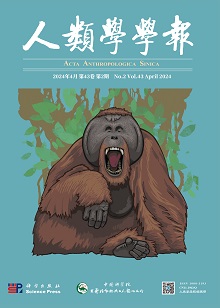Osseous artifacts manufactured with techniques specifically conceived for such materials, such as cutting, scraping, carving, grinding and polishing, is labeled as formal bone tools and commonly associated with modern human behaviour. Bone awls produced with such techniques are among the most significant components of formal bone tool assemblages uncovered from a large number of the important prehistoric sites in the Old World. In Africa, a bone awl with an age of 98.9±4.5 kaBP was discovered from the Blombos M3 phase; and such implements were also unearthed at a number of sites securely dated to between 75-60 kaBP. In Europe, the earliest age (44-40 kaBP cal) of bone awls which were from the Châtelperronian and the Uluzzian sites in France and Italy, is much younger than that in Africa. In China, the early appearance of bone awls is reported at the Longquan Cave in Henan province and the Ma’anshan Cave in Guizhou province, roughly contemporary to that in Europe.
The Ziyang Man site in Sichuan Province is well-known for the discovery of an almost complete skull-cap of late Homo sapiens. However, an entirely modified bone awl, the unique osseous artifact from the site has received little attention after its first appearance in academic works in 1952. In this paper, we present a detailed techno-functional analysis of this bone awl.
By comparing with modern reference collections curated at the IVPP, we conclude this artifact was most probably made from the tibia midshaft of a large-sized deer (most possibly Cervus unicolor), as some anatomical features of this bone element could still be observed on its surface.
Technological and morphometric analyses show the dorsal aspect of this specimen was unevenly scraped, with certain parts of the original compact bone surface still preserved; the ventral aspect, on the contrary, preserved no original bone surface as its distal and medial portion was leveled off by scraping and the proximal portion with a U-shape section was shaped by the repeated gouging with a lithic scraper.
Microscopic observation of the bone awl shows that rounding, fine transverse striations and polish are confined mostly within a limited area of both its tips. This is in full agreement with the features of ethnographic and experimental examples of awls used to piece hide and skins, as well as those of archaeological specimens of well-established functions.
Observation of the specimen under microscope revealed the presence of red residues still adhering to the distal tip of the bone awl. Both the SEM-EDS (Scanning Electron Microscope-Energy Dispersive Spectrometer) and LIBS (Laser-Induced Breakdown Spectroscopy) analyses of the sampled red residues detect Fe-rich components, and yield spectra with peaks centered on Fe element more intense than the control samples lacking red residues. We thus suggest that the distal tip of the awl might have been stained by ochre powder when it was used for hide or skin piercing.
Through comparative studies with the alike finds from the archaeological sites of southern China, the regional specificity as well as human behaviors embodied in this artifact were tentatively explored and it seems reasonable to argue that the bone artifact from the Ziyang Man site was an exemplary osseous tool in prehistoric China with signs of multi-functionality and clearly identified ochre residues on its functional unit.











